Perge Ancient City, located within the borders of Aksu district in Antalya province, Turkey, is one of the most important and magnificent cities of the ancient region of Pamphylia. It is estimated that Perge was founded in the 2nd millennium BC and experienced significant development, especially during the Roman Empire period. The city stands out with its wide colonnaded streets, monumental fountains, theater, stadium, and structures such as the agora. According to ancient sources, Perge was also home to prominent scholars like the mathematician Apollonius.
Today, visitors to Perge can explore the well-preserved ancient theater, Hellenistic towers, fascinating bath structures, and impressive monumental gates. The water channel running along the main street through the city and the surrounding columns reveal the city planning concept of the Roman period. Listed on the UNESCO World Heritage Tentative List, Perge is a captivating stop for visitors who wish to take a journey into the past with its historical atmosphere and impressive ruins.
Where is Perge Ancient City located?
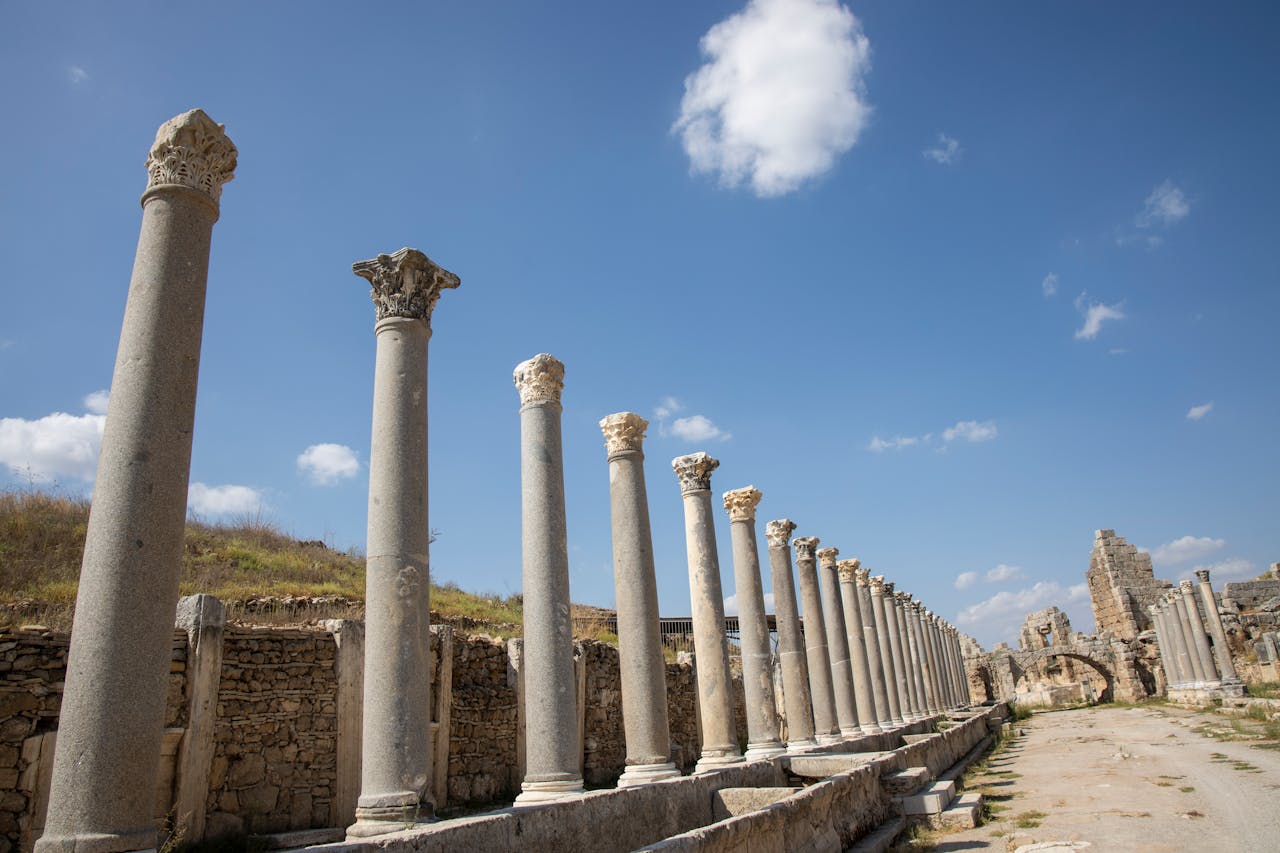
Perge Ancient City is located on the southern coast of Turkey, within the borders of the Aksu district of Antalya province. Situated approximately 17 kilometers from the city center of Antalya, the ancient city holds a highly accessible position. Thanks to its proximity to both Antalya Airport and the city center, it is frequently visited by both domestic and international tourists. The ancient city was established near the Aksu River (known in antiquity as the Kestros River) and rises strategically in the middle of a fertile agricultural plain.
As one of the most important cities of the historical region of Pamphylia, Perge prospered greatly due to its location at the intersection of ancient trade routes. Today, visitors who wish to reach Perge can easily access the site via public transportation departing from Antalya city center, private vehicles, or organized tours. There is also a large parking area at the entrance of the ancient city, making individual visits quite convenient.
How to get to Perge Ancient City?
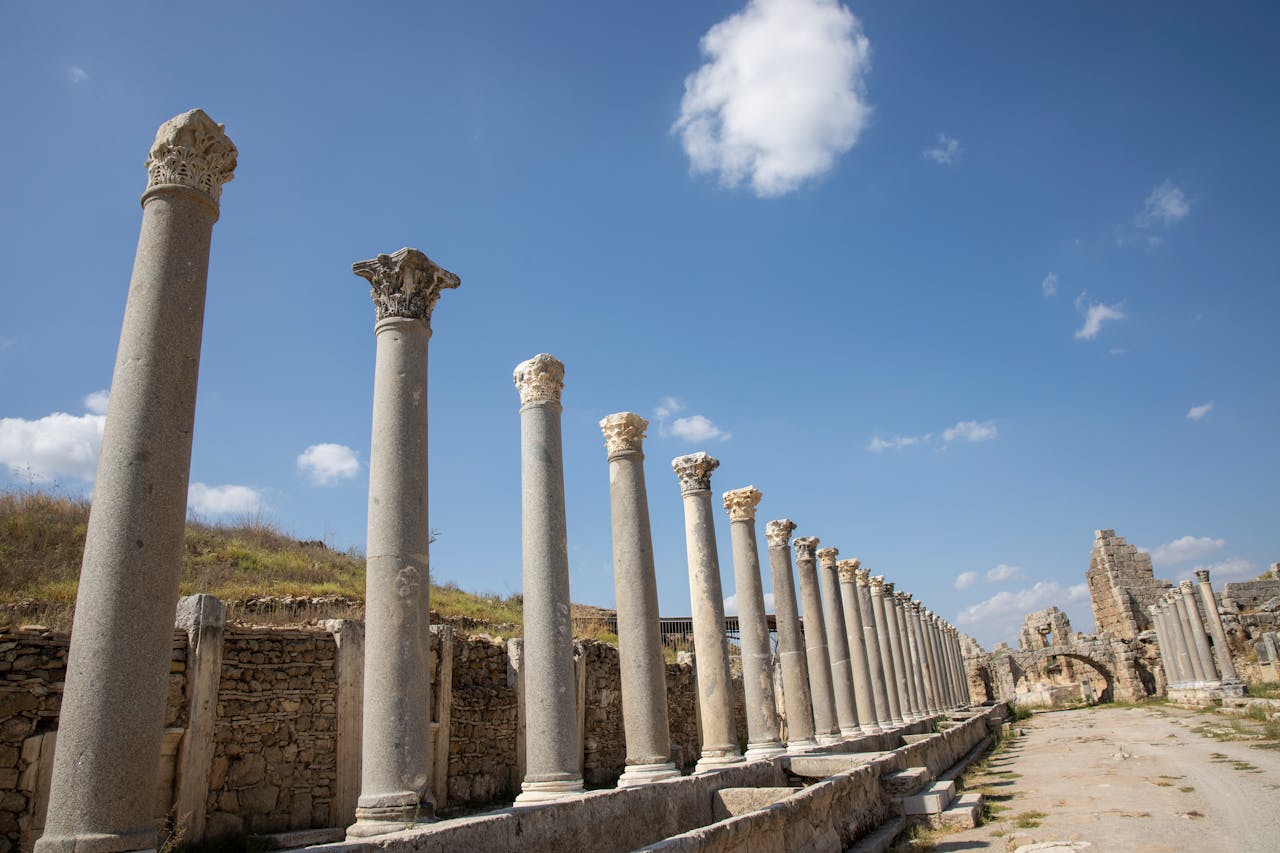
Transportation to Perge Ancient City from Antalya city center is quite easy. Located in Antalya’s Aksu district, this ancient city is approximately 17 kilometers away from the city center. For those who prefer public transportation, one of the best options is to use the T1B tram line. This line heads toward Aksu from the city center, and after getting off at the Aksu2 stop, there is a walk of about 20–25 minutes to the ancient city.
Alternatively, bus lines AC03, AF04, MAN47, SA19, and 528 also provide transportation to Aksu district. After arriving in Aksu by these buses, visitors can either walk approximately 2 kilometers to reach Perge Ancient City or opt for a short taxi ride. For those planning to travel by private vehicle, it is sufficient to head toward Aksu via the D400 highway from Antalya city center and follow the signs for Perge. There is also a parking area available at the entrance of the ancient city.
What is the entrance fee for Perge Ancient City?

As of 2025, the entrance fees for those wishing to visit Perge Ancient City are as follows: the entrance fee for domestic visitors is 400 TL, and it is free for Museum Card holders. For foreign visitors, the entrance fee is 11 Euros.
The Museum Card offers citizens of the Republic of Turkey unlimited access for one year to more than 300 museums and archaeological sites affiliated with the Ministry of Culture and Tourism. Turkish citizens under the age of 18 and over the age of 65 can enter Perge Ancient City free of charge by presenting their identity cards.
What are the visiting hours of Perge Ancient City?
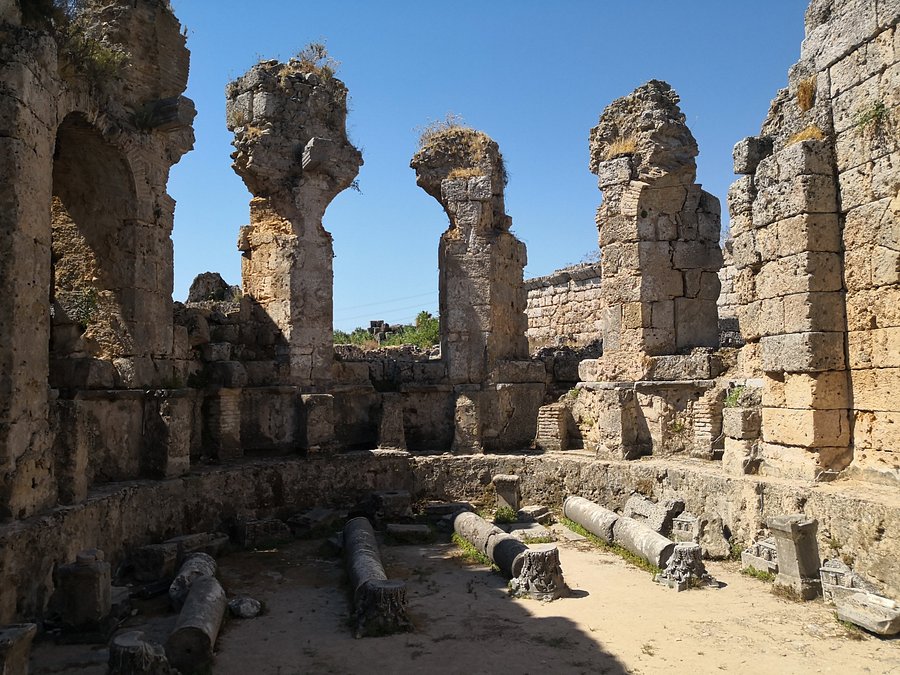
As of 2025, Perge Ancient City is open to visitors throughout the year, with different visiting hours for the summer and winter seasons.
Summer Season (April 1 – October 31):
Perge Ancient City is open for visits from 08:30 in the morning until 19:00 in the evening. However, according to the 2025 regulation of the Ministry of Culture and Tourism, visiting hours for some archaeological sites during the tourism season have been extended. Within this scope, the visiting hours for Perge Archaeological Site have been set as 08:00 – 21:00.
Winter Season (November 1 – March 31):
During the winter season, the ancient city can be visited from 08:30 in the morning until 17:30 in the evening.
Perge Ancient City is open to visitors every day of the week. However, the ancient theater section has been temporarily closed to visitors due to restoration work.
When planning your visit, it is important to note that the ticket office closes half an hour before the visiting hours end.
What is the history of Perge Ancient City?
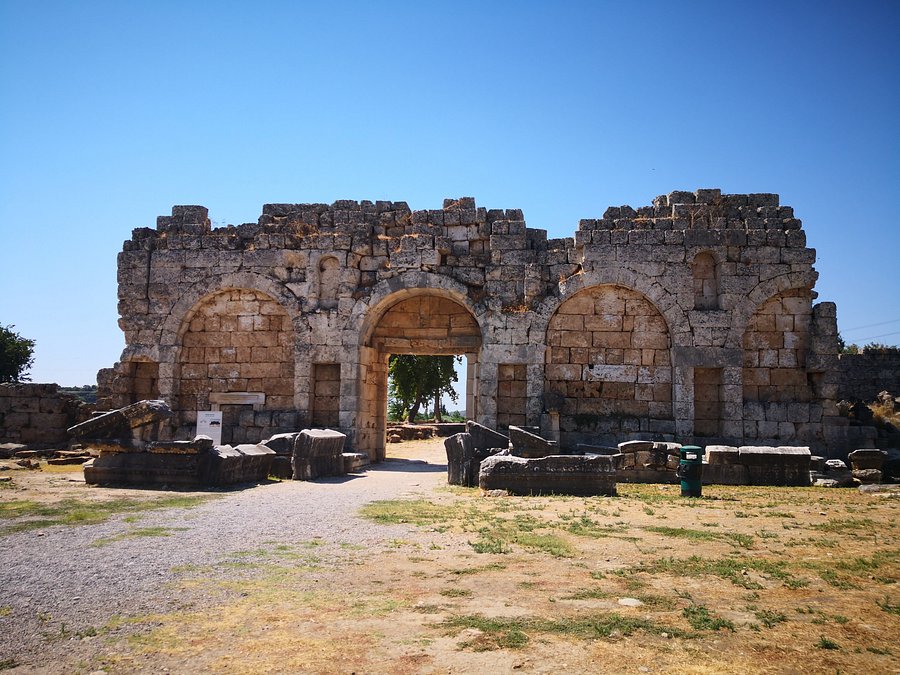
The history of Perge Ancient City dates back to the 2nd millennium BC. As one of the most important cities of the ancient Pamphylia region, Perge was a significant settlement especially during the Hittite period. Over time, the city developed under the influence of Greek colonization and acquired a fascinating urban plan during the Hellenistic period. In 334 BC, during Alexander the Great’s campaign in Anatolia, Perge voluntarily surrendered and was thus spared from the destruction of war. During the Roman Empire period, Perge experienced its golden age and was adorned with monumental structures.
Under Roman rule, Perge enjoyed great prosperity thanks to its abundant water resources, and impressive structures such as wide colonnaded streets, the agora, the theater, the stadium, and bath complexes were built. The city also became an important center during the early Christian period; it is mentioned in the Bible that Saint Paul visited Perge. Today, visitors to Perge have the opportunity to explore these impressive historical layers of the ancient world.
Which structures can be seen in Perge Ancient City?

Perge Ancient City hosts many impressive and well-preserved ancient structures. One of the most striking parts of the city is the large Roman Theater. With a capacity of about 15,000 spectators, this theater is famous for its detailed stage decorations. Nearby, the large stadium, with a capacity of 12,000 people, is one of the largest from the Roman period. At the entrance of the ancient city, impressive Hellenistic towers and city walls welcome visitors. Along the city’s main street, the colonnaded avenue, a water channel extends, showcasing Perge’s architectural planning.
In addition, many significant structures such as monumental fountains (Nymphaeum), agoras (marketplaces), bath complexes, and Roman gates can be seen in Perge. Within the city, there are also basilicas and monumental tombs from the early Christian period. All these structures bear important traces that demonstrate how developed and wealthy Perge was in ancient times.
Is Perge Ancient City on the UNESCO World Heritage List?
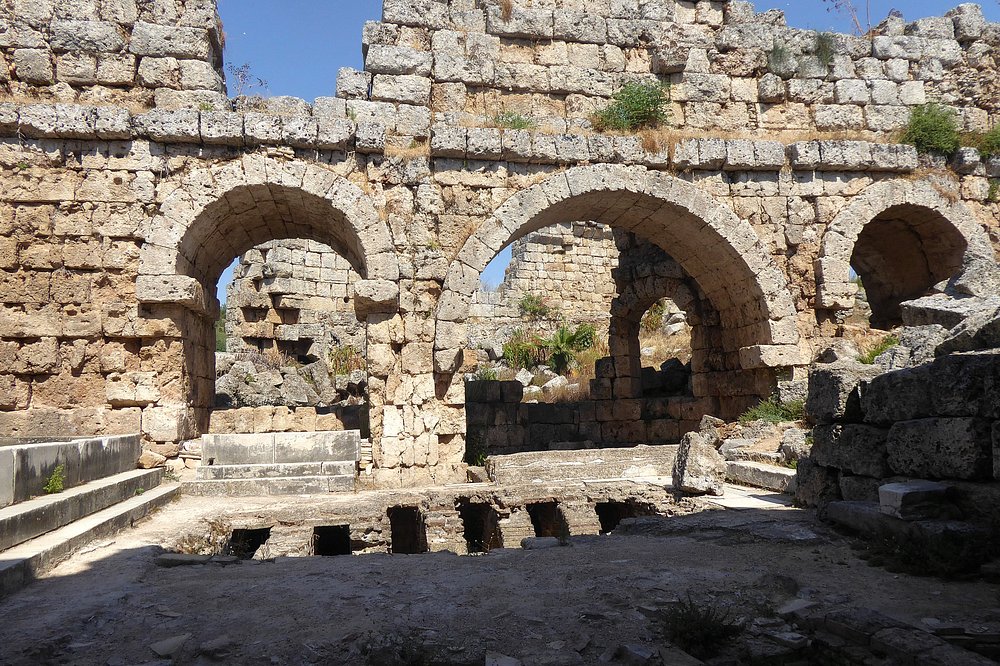
No, Perge Ancient City is not yet on the UNESCO World Heritage List. However, it was included in the UNESCO World Heritage Tentative List in 2009. This list represents the preliminary evaluation process for cultural and natural assets that may gain World Heritage status in the future.
Perge’s inclusion in this list was influenced by its original city planning, monumental structures, and water engineering systems from the Late Classical, Hellenistic, and Roman Imperial periods. In particular, the colonnaded street extending north to south and the water channel running through its center have given the city the identity of a “city of water.” Additionally, the defensive systems built during the Hellenistic period and restored during the Roman period have made Perge one of the important examples of ancient military architecture.
The application and evaluation processes required for full membership in the UNESCO World Heritage List are ongoing. Once this process is completed, Perge Ancient City will gain greater global recognition and protection.
In what year was Perge Ancient City founded?

The foundation of Perge Ancient City dates back to the 2nd millennium BC, approximately 4,000 years ago. Although the exact date of its establishment is not definitively known, it is believed that the city of Parha mentioned in Hittite documents refers to Perge. This indicates that Perge existed at least as early as the 1500s BC. Due to its geographical location and proximity to water resources, the city became an important settlement center in ancient times.
During the Hellenistic and especially the Roman periods, Perge experienced significant development, became wealthy, was adorned with monumental structures, and evolved into a center of culture, trade, and religion. It is recorded that during Alexander the Great’s Anatolian campaign in 334 BC, he entered Perge without causing any damage to the city. This deep historical background makes Perge one of the oldest and most important ancient cities of Anatolia.
Which civilizations lived in Perge Ancient City?

Perge Ancient City has hosted many different civilizations throughout history. The first traces of settlement date back to the 2nd millennium BC, during the Hittite period. After the Hittites, the region became an important city of the ancient Pamphylia civilization. In the 7th and 6th centuries BC, Perge came under the influence of the Lydians and later fell under the rule of the Persian Empire. In the 4th century BC, with Alexander the Great’s Anatolian campaign, the city came under the influence of Greek culture.
After the Hellenistic period, Perge came under the domination of the Roman Empire and experienced its golden age. The theater, stadium, baths, and colonnaded streets built during the Roman period reflect this era. Following the Roman Empire, Perge continued to be an important settlement during the Byzantine period and became a religious center in the early Christian era. Over time, the city lost its importance and began to be abandoned from the Middle Ages onward.
What is the best time to visit Perge Ancient City?
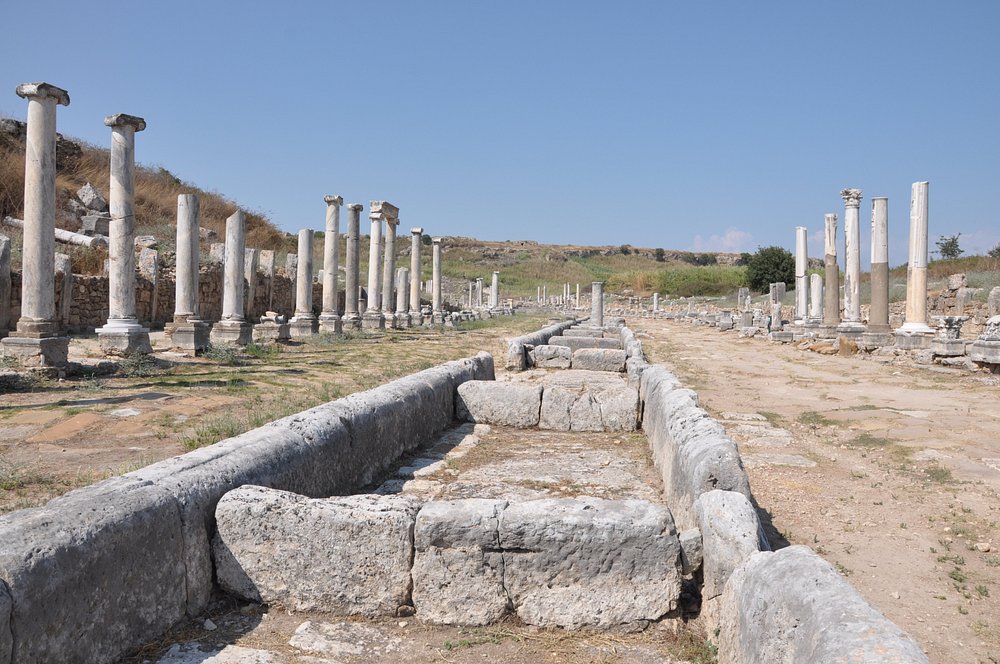
The best time to visit Perge Ancient City is during the spring and autumn months. Especially in April, May, September, and October, the weather is mild, sunny, but not oppressively hot. During these periods, it is possible to comfortably explore the ancient city by taking long walks outdoors. Additionally, during the spring months, the surrounding nature comes to life, making Perge’s historical atmosphere even more impressive.
During the summer months (June–August), the Antalya region becomes very hot and humid, which can make spending long periods outdoors challenging. In the winter months, rain and cool weather can reduce the comfort of visiting. If a visit is planned for the summer period, it is more advisable to go in the early morning or late afternoon hours to avoid the effects of the sun.
